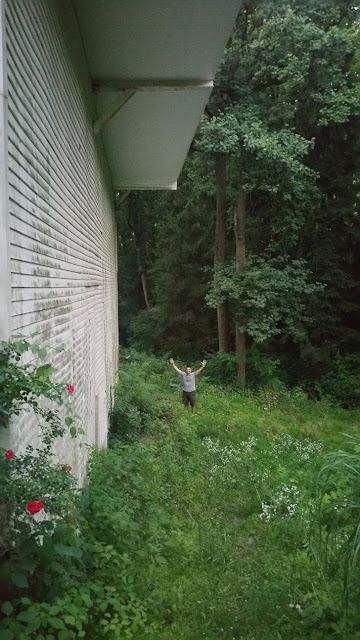Research
I am new to the property rehabbing profession, so I can't even begin to imagine how much more complicated research was before the extensive availability of information on the Internet. Even though there is a lot more information available online, it is always important to remember that you can't believe everything that you read...
Property History
Before I determine whether or not I am going to take the time to drive out to a property, I like to gather at least some basic information on a property. Like; photos (if any), home size, lot size, bedrooms, bathrooms, sales history, rough estimate of comps in the area, taxes, and any other little tidbits that I can gather up. A good resource for a quick search is a real estate website such as www.zillow.com. If I like what I see, then I will print a copy of the property listing found on Zillow to take with me on the road.
Another great resource is Google Maps. Sometimes there is a street view of the property that you're interested in checking out. However, be cautious that the photos my be dated. Additionally, if the house is in a rural area or a neighborhood, there is a possibility that there is not a street view option for the property.
Navigation
This simple tip saves a tremendous amount of time, not only in planning your prospecting route, but also in the amount of miles and drive time. I use a website called SpeedyRoute.com to put together the most efficient route to drive-by the houses that I deemed worthy to visit based on my research. The website appears to have a subscription based option, but I have so far been able to utilize the service for free and without signing up. Trust me, this is a huge time saver!
Prospecting
You've spent time researching the property and driving to it, so do some due diligence and spend a little time adding to the information that you have already gathered. Take some photos, take note of the neighborhood (is the property next to a crack house, industrial park, highway, railroad tracks, etc...). Verify that the information that you found online matches up with what you're seeing as you inspect the property.
I cannot stress the importance of driving out to a property to validate what you're seeing online. Do not make the mistake of blindly purchasing a property sight unseen. A great example of this is a foreclosed home that was listed on Auction.com that we checked into.
From the listing and the photos, everything looked great! This looked like a slam dunk deal. The house looked to be in great shape from the photos in the listing and even a look at Google Maps showed that house had some excellent curb appeal.
Even simply driving by the house, it would appear that everything checked out. A quick walk around the property revealed that things were not as they appeared to be. An investor that works based on online research alone would be duped into purchasing this disaster. Don't get duped.
This house actually sits on top of steel beams about 35+ feet in the air! I'm 6'2" and as you can see from the photo, that house is a looooong way up! From the road, everything looked like a dream come true. Once you got around back, it was an investor's worst nightmare. Needless to say, this is a deal that we ran from and never looked back.
Next Steps
Once you return from your road trip checking out potential deals. Review the photos and notes that you gathered. Determine which properties warrant moving forward and which ones are better suited for the trashcan.
Title Search and Comps
Now that the list of prospective deals has been narrowed down, it's time to call in the help of additional resources to dig even deeper. A title search will identify all of the liens that exist against a given property. Obtaining the comparable sales (comps) from a realtor will provide you with an idea about what the property may sell for in good condition.
Analyze the Deal
Now that you have completed all of the research and obtained the necessary information on a property, it's time to crunch the numbers. Using the information that was gathered during the drive-by, estimate what the property may need to make it marketable and sellable at the comp price provided by your realtor. Determine the remediation strategy of the liens on the property and how much it will cost you, all in, to purchase the property as is. Here is a quick and dirty calculation to determine whether or not a deal is right for you.
Total Purchase Price + Holding Costs + Repairs + Fees + Your Profit = After Repair Value
Keep in mind that once you begin rehabbing a property, there could be additional overages that were not taken into account. Make sure that you leave room in your profit margin to make sure that you always end up on top. If the After Repair Value of the property is less than the sum of the costs, then the deal will not work. Again, this is a very simplified way of quickly analyzing a deal. We will go into more specific details of what each each of these costs entail and how they can be calculated with seasonable accuracy.
Close
Now that you've done all of the leg work and analysis, it is time to close on the deal. It could be that you are buying the property at auction (so you know your maximum bid), you're putting in a traditional offer through a realtor, or you're purchasing the property from a wholesaler. Regardless of how you're obtaining the deal, you're now confident and ready!


No comments:
Post a Comment